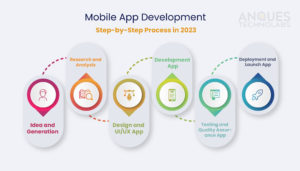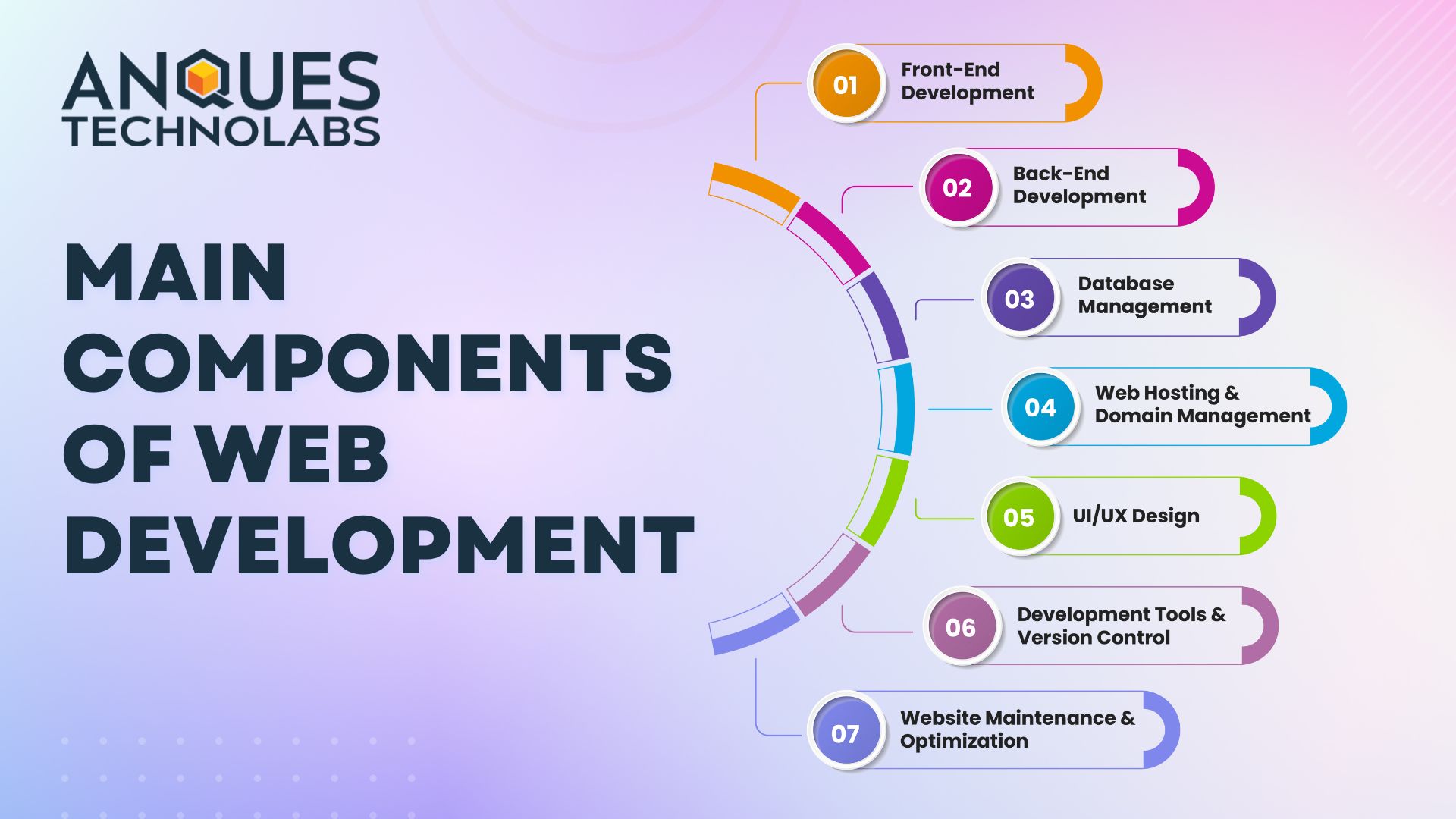What is Mobile App Development?
Mobile app development is the process of creating software applications that run on mobile devices such as smartphones and tablets. This process typically involves using languages and frameworks such as Java, Swift, and React Native to create apps for different mobile operating systems like iOS and Android. Mobile app development has come a long way since the first smartphone was introduced. With the increasing use of smartphones and the rise of app stores, mobile app development has become a crucial part of businesses and organizations. In this article we will look at the step-by-step process of developing a mobile app in 2023.
Idea And Genration
The first step in developing a mobile app is to come up with an idea. This can be a simple task or a complex process, depending on the nature of the app. Once an idea is identified, the next step is conceptualizing the app by creating a detailed plan and a user flow chart. This plan will provide a roadmap for the entire app development process.
Research and Analysis
Before starting the development process, it is important to research the market and analyze the competition. This will help to identify the needs of the target audience, their preferences, and the features that are currently missing in the market. This information will create a unique and user-friendly app that stands out from the competition.
Design and UI/UX App
A mobile app’s design is an important step in the development process. The layout should be simple to use, visually appealing, and navigable. Additionally, the design must to be in line with the app’s general concept and brand. Deciding whether you will create a custom design or use ready-made templates is essential.
Read Also :- Best UI UX Design Trends to follow
For instance, you may have thought it was a great idea while you were planning the app to have a swipe-left/swipe-right option for browsing screens. However, you still have time to build an alternate interface before committing to it if you receive feedback that this feature is unclear. Use the alpha testers’ experiences and constructive criticism to inform your interface design.
Development App
The development phase is where the actual coding of the app takes place. This phase can be divided into two parts: the front-end and the back-end development. Front-end development is responsible for the user interface of the app, while back-end development is responsible for the server-side functionality.
Front End
The Front End of a mobile app is where users will engage with it the most. To build it, there are three main methods. Platform-specific. Each mobile platform has only seen the creation of these apps. In other words, the code is fully optimized for each platform, rather than being shared between iOS and Android. Although it can be more expensive, the speed and responsiveness may make it worthwhile.
Backend
The creation of databases and server-side objects, which are in charge of your app’s performance, is part of the backend stage of app development. Your project team will now decide on suitable programming languages and start developing the app. The hosting environment and database engines will also be chosen. The backend phase of developing a mobile app is essential and affects how scaleable your app will be in the future.
Make sure you’re dealing with skilled software developers if you want your application to grow as your user base does. They’ll walk you through each significant stage of application development and make sure your system is easily scaleable.
Hybrid
Both platform-specific apps and web applications are present in Hybrid Solutions. They give programmers the ability to build application code using common web technologies and have it run inside a native shell. If you don’t have the time to design a cross-platform solution but still want your program to run on other platforms, these are fantastic.
Testing and Quality Assurance App
After the development phase, the app needs to be thoroughly tested to ensure that it functions as expected. This includes testing for bugs, compatibility issues, and user experience. The app should also be tested on multiple devices and platforms to ensure that it works seamlessly on all devices.
Read Also:- Best Automation Testing Tools for Software Performance
Deployment and Launch App
Once the app has passed all testing and is deemed ready for launch, it can be deployed to the app stores. This includes submitting the app to the Apple App Store and the Google Play Store. Additionally, you’ll need to decide if you want to use a marketplace to sell or distribute your app, like Amazon, Microsoft, or the Samsung Store.
Maintenance and Updates of the App
After launching the app, it is important to maintain and update it regularly. This includes fixing bugs, adding new features, and ensuring that the app is compatible with the latest operating systems.
2023 will see the emergence of new technologies like 5G and edge computing that will greatly impact mobile app development. The integration of these technologies into apps will provide a significant boost in performance, speed, and overall user experience.
Read Also:- Cost of Android App Development in 2023
Additionally, the use of artificial intelligence (AI) and machine learning (ML) will become more prevalent in mobile app development, providing new opportunities for businesses and organizations to provide innovative and personalized services.
Conclusion
Developing a mobile app in 2023 will be a complex process that involves several steps, from ideation and conceptualization to research, design, development, testing, deployment, and maintenance.
It’s important to have a detailed plan and a clear understanding of the target audience before starting the development process. The use of the latest technologies, along with a user-centered design approach, will ensure that the app is unique, user-friendly, and competitive in the market.if you need help estimating the cost of your own Android app development project, please contact us.














